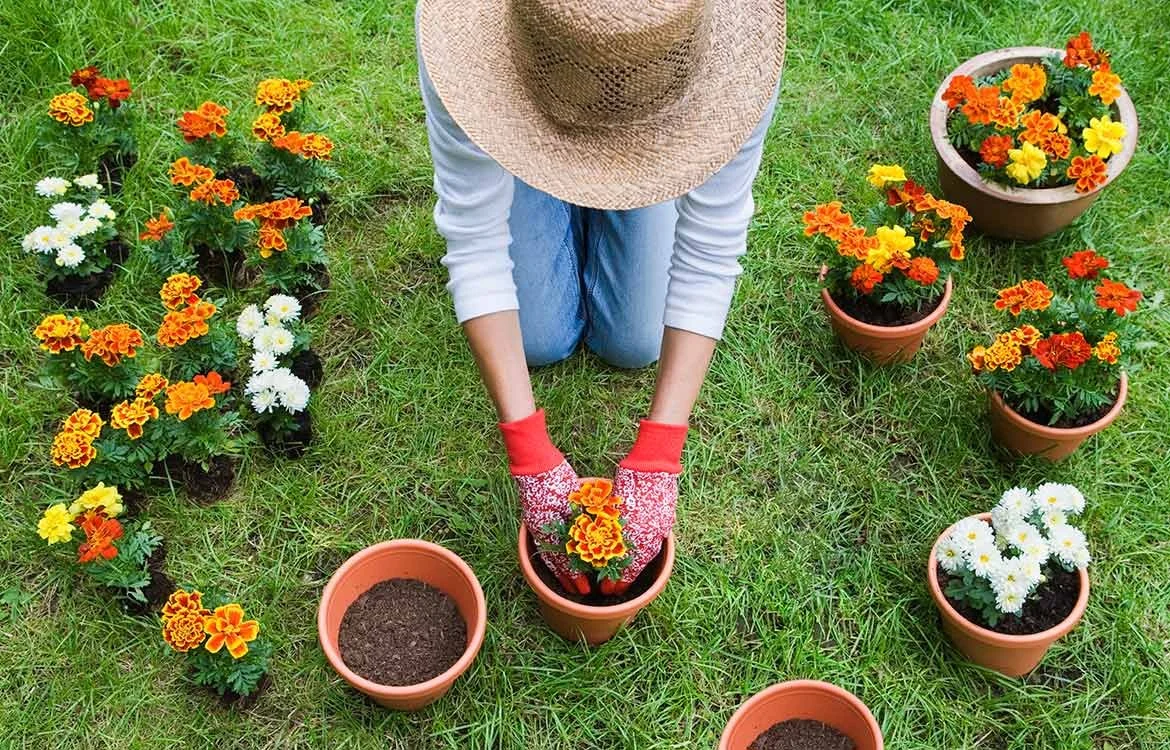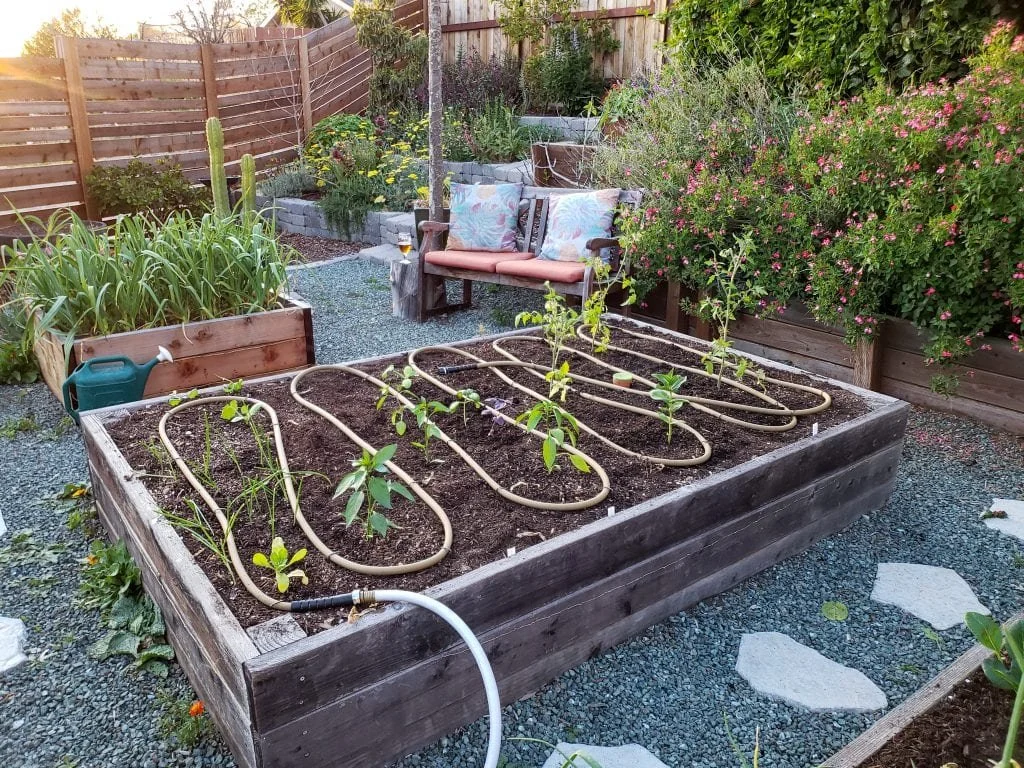STAY COOL: THE IMPORTANCE OF HYDRATION AND HELPFUL TIPS FOR YOU, YOUR PETS AND YOUR PLANTS THIS SUMMER
Temperatures are rising and now is the time to familiarize yourself with ways to keep cool!
You're out digging in the garden or working on something mildly strenuous outside, sweating and starting to get a headache. It's normal and the cure for that is hydration.
The National Academy of Medicine recommends that most people need 90–125 ounces of liquid in a given day. Some doctors even suggest taking your weight, dividing it in half, and that is your base count for ounces of liquid to consume daily. Take that, with the amount of sweat that you lose in a day, and you have some goals to consider (a moderate sweat amount is .8-1.2 liters an hour, full range can be from less than .8-1.5 liters an hour with exercise). Replacing that is a job in itself, considering you lose both sodium and potassium along with liquid in the sweat.
But that's a job that can be no sweat (heh heh). There are a myriad of drinks with electrolyte replacements in them, bananas have loads of potassium, and you can even make a mock pedialyte with some online recipes involving some water, salt & sugar.
Here are some helpful tips to beat the Florida heat While Landscaping:
Start your day off with a big glass of water
Carry a reusable canteen wherever you go
Download some of the apps that remind you to drink water
Have a glass before meals to aid in digestion. Even having liquid heavy foods like soups or broths help out immensely because you are adding beneficial vitamins & minerals into the mix.
Use cooling neck wraps throughout the day to keep the heat off your neck and back. You can keep a few in a cooler and exchange them out as the day goes on.
Examples of do’s and don’t when choosing your gardening attire during the summer heat
Wear light colored, loose-fitting clothing.
Long sleeved clothing is ideal to combat the heat and sun. The sleeves will protect your skin from the sun’s harmful rays. Many shirts have moisture-wicking and UV-protection built into them.
Choose a sunscreen with a minimum of 30 SPF that doesn’t wear off when you sweat. Cover your face/neck/tip of your nose, arms/legs and tops of your ears. Sporting a shaved head or bald spot these days? Be sure to cover that, too.
Find sunglasses that have 100% UV-ray protection.
Wide-brim hats are the choice of most lawn care professionals vs. baseball hats. The wider brim helps protect you from the sun’s rays while the hats are usually more vented than a baseball cap.
Sun protection is important for gardeners in the summer because too much sun exposure can damage your skin, increase your risk of skin cancer, and make you more susceptible to heat stroke.
The heat in the south is no joke in the middle of summer, and if you are landscape farming, agriculturally farming, or just having some fun in the garden, there's an enormous chance that you may need to up your water intake. Add to that caffiene, alcohol, or some of the sugary drinks that seem so convenient on the shelves, the need for, say it with me, water, is much more crucial to avoid cramps, lethargy, or worst case—heat stroke. Keep in mind it's all avoidable and remember, sweating is our natural cooling mechanism, intelligently designed to keep our core at cool, working levels.
Recognize signs of heat stroke before it’s too late
If you exhibit any signs of heat stroke, immediately slow down and cool yourself off.
Learn the signs and what you should do while you’re waiting for emergency personnel to get there if you’re experiencing heat stroke.
The 8 Deadly Signs of Heat Stroke
According to the Mayo Clinic’s website, signs you may be experiencing heat stroke include:
High body temperature. A core body temperature of 104 F (40 C) or higher, obtained with a rectal thermometer, is the main sign of heat stroke.
Altered mental state or behavior. Confusion, agitation, slurred speech, irritability, delirium, seizures and coma can all result from heat stroke.
Alteration in sweating. In heat stroke brought on by hot weather, your skin will feel hot and dry to the touch. However, in heat stroke brought on by strenuous exercise, your skin may feel dry or slightly moist.
Nausea and vomiting. You may feel sick to your stomach or vomit.
Flushed skin. Your skin may turn red as your body temperature increases.
Rapid breathing. Your breathing may become rapid and shallow.
Racing heart rate. Your pulse may significantly increase because heat stress places a tremendous burden on your heart to help cool your body.
Headache. Your head may throb.
Unlike humans, dogs cannot sweat through their skin. They rely on panting and releasing heat through their paw pads and nose to regulate their body temperature.
Don’t forget your furry friends!
Give pets plenty of fresh, clean water when it’s hot or humid outdoors as pets can get dehydrated quickly. Make sure your pets have a shady place to get out of the sun, be careful not to over-exercise them and keep them indoors when it’s extremely hot.
Know the symptoms of overheating in pets, which include excessive panting or difficulty breathing, increased heart and respiratory rate, drooling, mild weakness, stupor or even collapse. Symptoms can also include seizures, diarrhea and vomiting along with an elevated body temperature of over 104 degrees.
Never leave your animals alone in a parked vehicle. Even a few minutes can be too long. Not only can it lead to fatal heat stroke, but it’s illegal in many states!
Don’t let dogs linger on hot asphalt when the temperature is very high. Being so close to the ground, your pup’s body can heat up quickly, and sensitive paw pads can burn. Keep walks during these times to a minimum, mornings and evenings are the best times to be outdoors.
In extremely hot weather, you might need to water your plants daily or every other day.
You know who else needs water? Your plants!
When is the best time to water them? In the early morning or late evening, but it's a lot more beneficial in the morning because, while the evenings are also good times to water, there is a chance of fungal disease associated with watering at night. If you water during the heat of the day, the water droplets can have a chance of magnifying the light from the sun, causing leaf scorch.
Think about:
The plant’s water requirements
The type of soil you have, and how it retains water (is it well draining or not?)
The temperature, light, and humidity the plant is exposed to
If the plant is in a pot, plant bed, or in-ground
Is the plant actively growing? Plants that are not in their active growing season need less water.
As for the amount of water, don't drench them, but don't underwater them. I know that sounds like a fine line, but when you water your plants, take a finger to the ground and the top couple of inches is wet, that should be adequate for many smaller plants. New trees or bushes may need more water to establish themselves, but if you overwater, you may have some issues with root rot. There's always a perfect medium and the trick is to stop before excess.
The frequency of watering potted plants depends on several factors, including: Climate, Pot size, Plant type, and whether the pot is in sun or shade.
For potted plants, you'll want to move many of them to partial shade unless they are a heat & sun loving cactus or succulent. The reason for this is that roots, while being in the pot, can feel that heat being absorbed by the pot itself. I imagine that can't feel too good. As for watering, water them until it flows out of the bottom of the pot. If water doesn't come out of the bottom of the pot, you may have some drainage issues that need solved. Try repotting with a layer of gravel in the bottom for easy drainage if the plant is going to live in the pot for a while.
All of this said, irrigation can be a great addition for your gardens to ensure timed, care-free watering that you can adjust by the clock timer. Contact us at Wacca Pilatka for a quote on adding irrigation to your landscape, if you have questions or want to take a peek into that world to keep your hands in the ground!











